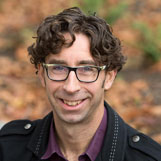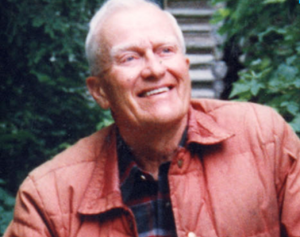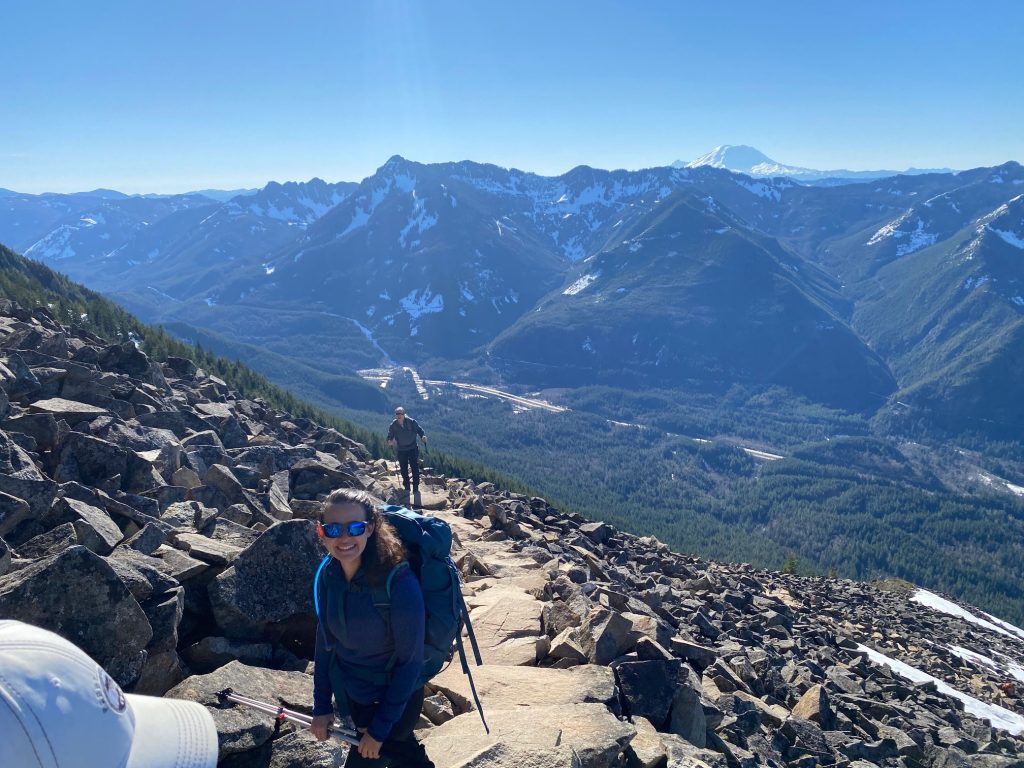The Unsung Community Heroes Who Make Biotech Thrive

Luke Timmerman, founder & editor, Timmerman Report
Every thriving biotech hub can trace its origins to one or two outstanding scientific institutions. But every thriving region can also trace some of its success back to community leaders.
These are people who attend boring night meetings. They aren’t household names. They’re fine with that.
These people were especially common in America after World War II. They laid down the physical infrastructure and social norms for those of us who came next.
One of these people in Seattle, where I live, was named Jim Ellis.
Ellis died three years ago at 98. He was a named partner at one of Seattle’s top law firms, Preston Gates & Ellis. He worked with William Gates Sr., Bill’s dad. The firm today is known as K&L Gates.
But that’s not why we remember Jim Ellis.
When he was a up-and-coming lawyer, Lake Washington, a freshwater jewel linked to Puget Sound and the Pacific, was full of sewage. People at the time said the water was like “split pea soup.” Various government fiefdoms and unrestrained private land developers contributed to it. It was a mess. Fingers were pointed.

Jim Ellis
Ellis got involved. Behind the scenes, he brought his energy and creativity to the task of herding the necessary cats to clean it up.
But there was more. The Seattle region was growing beyond its natural resource-based economy – logging, fishing, the seaport. Boeing was emerging. Newcomers were coming. The region needed to think about how to manage the growth intelligently.
Highways needed to be expanded. Parks, trails, public swimming pools and youth centers needed to be built and upgraded. It was going to cost money. Ellis mobilized community support for a series of bond initiatives in the 1950s and 1960s that were collectively known as “Forward Thrust.”
All of this was happening in tension with the natural splendor of the Cascades. Millions of acres of forest needed to be preserved for wildlife habitat, for outdoor recreation, for clean air and water, and to preserve natural beauty. The competing interests between economic growth and environmental preservation needed to be held in balance.
Ellis thought about common interests, the common good. By the early 1990s, he put it all together with his greatest achievement — the Mountains to Sound Greenway. It’s 1.5 million acres of preserved land between Ellensburg, on the east side of the Cascades, stretching to Seattle in the west.
I first saw it as a 21-year-old kid from Wisconsin. It was Memorial Day weekend of 1997. I was excited to start a summer reporting internship at one of the nation’s great regional newspapers – The Seattle Times. I had driven my rusty Pontiac 2,000 miles across the Great Plains, long stretches of Montana, and the arid Columbia River basin.
Then came the mountains. They were covered in Evergreen trees. Alpine lakes shimmered.
From Snoqualmie Pass to Seattle, for 50 miles, it kept going. No strip malls or tacky billboards. People lived in the suburbs east of Seattle, the foothills of the Cascades. But the trees were everywhere, swallowing you up. Nature felt big. Individual people felt small.
This seemed like a great place to live, to explore, to build a career.
For years, I knew nothing about the history of the Mountains to Sound Greenway. Maybe a decade ago, I learned for the first time about Jim Ellis. There was no statue to the man. When he died, I looked for more information, but there wasn’t much. Recently, I found this touching tribute published in 2021 by the Trust for Public Lands.
It’s hard to imagine what Ellis was up against in his day. Think of the vision and tenacity it must have taken with all the federal, state, and private landowning interests. A lot of people with different viewpoints needed to rally around a shared vision.
Ellis wasn’t in it for money or ego. He never ran for public office.
One secret to his success was his philosophy on how to spend his time. He spoke of a one-third/one-third/one-third way of life. One-third was for professional work, one-third for family, and one-third for community.
Where did this philosophy and drive come from? It’s hard to say for sure. But Ellis’ brother died in World War II in 1945. That, according to the Trust for Public Lands, lit a fire in him to honor his brother’s memory. I also have a hunch that the community work, and the family time, helped energize him and make him even more effective professionally. It could have been a virtuous cycle.
Ellis was on my mind last weekend, when I took a small group of biotech people on a hike up Mailbox Peak. It’s a 4,800-foot peak near North Bend, smack in the middle of the Mountains to Sound Greenway.
Around Noon, there were about 20 people on the summit when my small group arrived. Most were in their 20s and 30s. The skies were sunny and clear. You could see snow-capped peaks more than 100 miles away.

Biotech people enjoying the mountains, Feb. 13, 2022. Aleena Arakaki, postdoctoral research fellow, Fred Hutch; and Sam Blackman, co-founder and chief medical officer, Day One Biopharmaceuticals
Two young people we met on the hike happened to be from the biotech community. A postdoc on my team, Aleena Arakaki, wasn’t surprised. It’s part of what draws young scientists to the Fred Hutchinson Cancer Research Center – the chance to occasionally get away, to clear the head, get a little exercise, maybe get a beer afterwards with lab friends and colleagues.
Seattle’s biotech community exists because of decades of public investment in science at the University of Washington and Fred Hutch. But it also thrives today because we have such amazing quality of life in the Northwest that continually attracts people from around the world.
For that, we can thank unsung heroes like Jim Ellis.
This also makes me wonder: Who are the people doing similar things in Boston, San Francisco, San Diego, Philadelphia, Los Angeles, Chicago, Raleigh-Durham, New York, New Jersey and elsewhere?
Who laid down the critical scaffolding that made it possible for those regions to thrive?
Who’s continuing this work today?
There are people out there doing this hard and thankless work to strengthen our communities. Let’s show a little respect. Maybe get involved personally. It’s meaningful work, and it can be lasting work.
Financings
New York-based Kallyope, the developer of treatments based on the science of the gut-brain axis, raised $236 million in a Series D financing. Mubadala Investment Company and The Column Group co-led.

Natalie Holles, CEO, Third Harmonic Bio
Cambridge, Mass.-based Third Harmonic Bio came out of stealth mode, announcing it has closed a $105 million Series B financing and raised a total of $155 million since inception. General Atlantic and BVF Partners co-led the B round, and Atlas Venture and OrbiMed led the A round. The company is in clinical development with an oral KIT inhibitor for treatment of severe allergy and inflammation. Natalie Holles, formerly of Audentes Therapeutics, is the CEO.
Pasadena, Calif.-based Terray Therapeutics raised $60 million in a Series A financing to advance its work on AI drug discovery. Madrona Venture Group led.
Redwood City, Calif.-based Synthego, the genome engineering company, raised $200 million in a Series E financing. Perceptive Advisors led.
The Mark Foundation for Cancer Research announced a new $500 million funding commitment from founder Alex Knaster. The foundation also announced Ray DuBois has joined as executive chairman of the board.

Lewis “Rusty” Williams, CEO, Walking Fish Therapeutics
South San Francisco-based Walking Fish Therapeutics, a developer of B cell therapies, closed an expanded $73 million Series A financing co-led by Northpond Ventures and First Spark Ventures.
South San Francisco-based Electra Therapeutics raised $84 million in a Series B financing co-led by Westlake Village Biopartners and OrbiMed. It’s developing antibodies against signal regulatory proteins.
South San Francisco-based Twist Bioscience, the DNA synthesis company, raised $269 million in a stock offering at $55 a share.
Deals
Cambridge, Mass.-based Remix Therapeutics secured $45 million upfront through a partnership with Janssen Pharmaceuticals. The companies will work together on small molecules designed to work by reprogramming RNA processing. (TR coverage, Dec. 2020)
Watertown, Mass.-based Neumora Therapeutics obtained an exclusive worldwide license to an M4 muscarinic receptor allosteric modulating drug from Vanderbilt University’s Warren Center for Neuroscience Drug Discovery. The company is getting two novel series of compounds in late preclinical development, which it says has the potential for a better safety profile and once-daily dosing. Terms weren’t disclosed. (TR coverage of Neumora, Oct. 2021).
Waltham, Mass.-based ImmunoGen pocketed $13 million upfront through a deal with Eli Lilly to develop antibody-drug conjugates for cancer.
The Scientific Enterprise
- The Dilemma of Brilliant Jerks. The Bulwark. Feb. 11. (David Shaywitz)
- Sometimes Science Takes a Village. Whitehead Institute. Feb. 16. (Greta Friar)
- Recapturing Our Resilience. LifeSciVC. Feb. 16. (Ankit Mahadevia)
- Pfizer joined the Open Targets Consortium, a group focused on drug target identification, prioritization, and validation. EMBL’s European Bioinformatics Institute, the Wellcome Sanger Institute, GSK, Bristol Myers Squibb, and Sanofi are current members. Feb. 14. (Pfizer statement)
Vaccine Equity
- Vaccine Makers Must Help the World Prepare for the Next Pandemic. Bloomberg Opinion. Feb. 14. (Lisa Jarvis)
- Health Canada authorized the Novavax protein-plus-adjuvant vaccine for COVID-19. Novavax touted the efficacy of its vaccine, which we already knew, but said nothing in its press release about how many doses it can and will ship to Canada. (See Frontpoints, Feb. 3, 2022, “The World Waits for Novavax.”
- Moderna announced it’s building up Asian commercial subsidiaries in Malaysia, Taiwan, Singapore and Hong Kong, as well as European commercial presence in Belgium, Denmark, the Netherlands, Norway, Poland, and Sweden.
Science Policy
- Pandemics disable people — the history lesson that policymakers ignore. Nature. Feb. 16. (Laura Spinney)
- Long-Haul COVID Cases Could Spike after Latest Wave. Scientific American. Feb. 3 (Melinda Wenner Moyer)
- Americans are tired of the pandemic. But disease experts preach caution — and endure a ‘kill the messenger’ moment. Washington Post. Feb. 17. (Joel Achenbach)
- The Moral Danger of Declaring the Pandemic Over Too Soon. NYT. Feb. 17. (Gregg Gonsalves)
Our Shared Humanity
Health Affairs came out with a series of articles on Racism & Health. There is a lot here to read and think about carefully. This issue deserves some quiet reading time over the weekend. (Health Affairs)
The Millions of People Stuck in Pandemic Limbo. What Does Society Owe Immunocompromised People? The Atlantic. Feb. 16. (Ed Yong)
The Internet is fundamental to life in the 21st century. It’s hard to communicate with the healthcare system, find out where vaccines are available, make an appointment, etc. without it. And yet in America, a lot of people don’t have easy access to the Internet, and that fact makes it harder for them to access healthcare. Read more about it in “Advancing Diversity, Equity, and Inclusion Through Web Accessibility” by Mona McCarthy, Senior Director of Data and Technology, and Warner Santiago, Senior Director of DEI and Workforce Development at MassBio.
Data That Mattered
Cambridge, Mass.-based Sage Therapeutics and Biogen reported that a Phase III trial of zuranolone hit its primary and secondary endpoints in a study of patents with major depressive disorder. The effect kicked in quickly, after three days, and lasted through the two-week treatment period.
Regulatory Action
Eli Lilly won FDA Emergency Use Authorization for bebtelovimab, as a new therapeutic neutralizing antibody against SARS-CoV-2, including the Omicron variant. It’s for patients ages 12 and up, for the treatment of mild to moderate COVID, for patients who are at high risk.
Cambridge, Mass.-based Agios Pharmaceuticals won FDA approval for mitapivat (Pyrukynd) as a treatment for hemolytic anemia in adults with pyruvate kinase deficiency.
Somerset, NJ-based Legend Biotech said the FDA placed its Phase I trial of an autologous CAR-T cell therapy for T-cell lymphoma on clinical hold. The first patient dosed in the trial experienced low CD4+ T cells, and the company notified the FDA before the hold. The patient hasn’t suffered a serious adverse event, the company said.
A Less Known Infectious Threat
The State of Innovation in Antibacterial Therapeutics. BIO Industry Analysis. Feb. 2022. (David Thomas and Chad Wessel)
Science
- Safety and target engagement of an oral small-molecule sequestrant in adolescents with autism spectrum disorder: an open-label phase 1b/2a trial. Nature Medicine. Feb. 14. (Stewart Campbell et al Axial Therapeutics)
- Whole genome sequencing for the diagnosis of neurological repeat expansion disorders in the UK: a retrospective diagnostic accuracy and prospective clinical validation study. The Lancet Neurology. March 2022. (Kristina Ibanez et al Genomics England)
- EDP-938, a Respiratory Syncytial Virus Inhibitor, in a Human Virus Challenge. New England Journal of Medicine. Feb. 17. (Alaa Ahmad et al Enanta Pharmaceuticals)
- Enhancing neural markers of attention in children with ADHD using a digital therapeutic. PLoS One. Dec. 31, 2021. (Courtney Gallen et al UCSF
Science of SARS-CoV-2
- The oral protease inhibitor (Pfizer’s Paxlovid) protects Syrian hamsters against infection with SARS-CoV-2 variants of concern. Nature Communications. Feb. 15. (Rana Abdelnabi et al Rega Institute for Medical Research, Belgium.)
- Virological characteristics of SARS-CoV-2 BA.2 variant. BioRxiv. Feb. 15. (Daichi Yamasoba et al University of Tokyo)
- Virome characterization of game animals in China reveals a spectrum of emerging pathogens. Cell. Feb. 15. (Wan-Ting He et al Nanjing Agricultural University, China)
- Multistate Outbreak of SARS-CoV-2 B.1.1.529 (Omicron) Variant Infections Among Persons in a Social Network Attending a Convention — New York City, November 18–December 20, 2021. CDC Morbidity and Mortality Weekly Report. Feb. 18. (Sarah Smith-Jeffcoat et al CDC)
- Waning 2-Dose and 3-Dose Effectiveness of mRNA Vaccines Against COVID-19–Associated Emergency Department and Urgent Care Encounters and Hospitalizations Among Adults During Periods of Delta and Omicron Variant Predominance — VISION Network, 10 States, August 2021–January 2022. CDC Morbidity and Mortality Weekly Report. Feb. 11. (Jill Ferdinands et al CDC)
Science Features
The Calorie Counter. Evolutionary anthropologist Herman Pontzer busts myths about how humans burn calories—and why. Science. Feb. 17. (Ann Gibbons)
We’re Entering the Control Phase of the Pandemic. The Atlantic. Feb. 17. (Katherine Wu)
Personnel File
The US Senate voted 50-46 to confirm Robert Califf as FDA commissioner. The acting commissioner, Janet Woodcock, will stay on as principal deputy commissioner. There’s not a lot here worth analyzing. It’s simple. An experienced, visionary and utterly non-controversial nominee to run this critical public health agency was delayed three months for no good reason.
The White House, days after Eric Lander resigned as science advisor, said former NIH director Francis Collins will step in as science advisor to the President. Alondra Nelson will perform the job of director of the Office of Science & Technology Policy, stepping up from her current role as deputy director for science and society at OSTP. These two have important work to do in continuing to shepherd along the reboot of the Cancer Moonshot, and the creation of the Advanced Research Projects Agency for Health (ARPA-H).
San Francisco-based Vertex Ventures HC hired Christine Brennan as a managing director. She is based in Cambridge, Mass. and was previously a partner with MRL Ventures Fund.
New York-based Stablix hired Tony Kingsley as CEO. He previously did a brief stint at Scholar Rock.
Brett Giroir, former assistant secretary of Health and Human Services, was hired as CEO of Atlanta-based Altesa Biosciences. The company is working on antiviral drugs against common respiratory viruses such as rhinovirus and parainfluenza, and global viral threats like Dengue fever and Yellow Fever.





